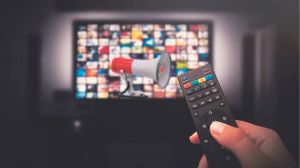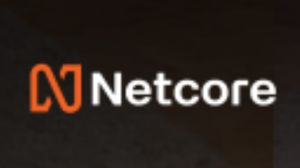Call it a ‘bold move’ or ‘bold claim’, this has been a strategy followed by brands in their marketing and communication for years now. Needless to say, from time to time it has backfired, with cleaning and detergent brands changing tack to claiming 99.9% impact as opposed to 100%. As a result, to curb misleading ads the government has rolled out a mechanic called, the ‘Self Certification’, process. Even as many would call this a need of the hour, one cannot deny the fact that among all mediums digital advertising is expected to suffer a blow.“ There will be a drop of 20% or more in ad volume. For example, the Google Display Network spans millions of sites, and Facebook ads can be targeted to specific audiences. However, we don’t have any clear idea about how this will impact push notifications from apps like Zomato. There is a significant lack of understanding regarding how these regulations will operate, introducing bureaucratic hurdles. Everything is a mess right now, and it is going to impact targeted audience marketing,” Amit Mathur, president – sales and marketing, Finolex Cables, told BrandWagon Online.
According to industry estimates, within digital advertising ad spending on programmatic is expected to reduce by as high as 70% across all platforms, especially in the case of MSMEs as it works on a real-time model. As per estimates, approximately 39,000 crore ads were released last year. Moreover, of the total ads released on digital about 50% was on programmatic.
According to sources, on Tuesday industry bodies and stakeholders met representatives from the Ministry of Information and Broadcasting. “MIB has acknowledged that there are issues in the current system. This includes the lag faced while submitting documents on the portal. The regulator has assured that it will work towards solving the issue,” sources close to the development said, on the condition of anonymity. Moreover, during the meeting two or three solutions were discussed. This included advertisers obtaining a year-long certificate for all sorts of ads which will be released across platforms. Secondly, it was also discussed that the regulation remains restricted to the original verdict of health supplements or products which are consumed, as opposed to being implemented across sectors.
A few industry experts believe that the absence of stringent regulatory oversight allowed companies to exploit consumers, leading to the rise of misleading and sometimes harmful information. Following a lawsuit by the Indian Medical Association against companies making false medical claims, the Supreme Court has ordered stricter regulations. On June 3, 2024, the Ministry of Information and Broadcasting mandated all advertisers to certify the truthfulness of their ads, affecting newspapers, TV, and online platforms. This move aims to curb misleading advertisements and protect consumers. “While the intent is good so that brands refrain from making tall claims, the process requires a lot of fine-tuning to accommodate various formats of digital ads, especially in the case of programmatic media and real-time dynamic creative message solutions. Not to mention, at the regulator’s end too, it will require work, as the website needs to be robust enough to host the information and allow for large numbers of concurrent users and uploads, so the capacity needs to be upped. Currently, it takes about four hours to upload one document. So, a lot of work needs to be done,” Benedict Hayes, executive director and partner, Ethinos Digital Marketing, said.
The process and the ambiguous outlook!
Industry stakeholders opine that while large advertisers with heavy ad spending may not be impacted severely, one can expect a decline of about 10% in the case of direct-to-consumer (D2C) brands. Add to this, the current regulation comes with its own set of issues. To begin with, privacy is one of the biggest concerns the industry has. The current upload framework is not secure, allowing anyone to access any material that has been uploaded. What this means is anyone can search for a brand name and see all current and upcoming assets, impacting confidentiality, especially for new launches. “The system is fully open to the public for all ad campaigns. So there is no privacy when it comes to launching a product, as the regulator’s website will reveal all,” Hayes added.
Another issue pointed out by industry stakeholders is that the current platform lacks the capacity required to store all documents, thereby making the process cumbersome. The feedback is that this makes the process increasingly encumbering at times taking as long as four hours to upload one document. In fact, generating an OTP (one-time password)while creating an account has become an issue for many advertisers. The next area of concern of advertisers is the nature of ads or what is being called the scope of assets and platforms. Currently, questions such as – are assets of KOL (Key Opinion Leader) assets included to, whether the process will be done by language for the same creative, or is this to be done by platform? Also, what is the scope of change in the asset that necessitates a fresh certificate? Moreover, is a certificate needed for any of the social media posts issued by the brand? Furthermore for digital assets, what is the scope of the declaration? “The implementation has led to a lot of chaos due to ambiguity about what it applies to and what doesn’t. For example, many brands regularly post on social media. Does the new mandate cover all social media posts or only those that are boosted? There isn’t enough clarity on what is covered and what is not,” Neelesh Pednekar, co-founder and head of digital media, SocialPill, said.
Programmatic and real-time creation of advertisements by AI are the two areas within digital advertising, where the industry lacks clarity. For instance, what about ads where the communication changes on a real-time basis? Also, will the declaration be required for each creative, at the start of every campaign, and for every edit? Interestingly, a few industry experts believe that there will be no large adverse impact. “In the case of large advertisers such as categories such as CPG (Consumer Packaged Goods) products, there will be no impact, as these work with large agency network, which manage everything. Also, as per the mandate, the regulator has asked for the framework and not the real creatives, so as long as that has been followed, there should be no impact,” a senior planner, said on the condition of anonymity.
It’s complicated!
Even as the regulator is listening to industry stakeholders to be able to solve various issues, for the time being, the legal liability has increased as far as advertisers are concerned. For instance, is self-certification required for all assets or is it only a set of assets? How is the industry expected to manage dynamic creative ads? Another, question which has been raised is that when it comes to digital certifications, do we need to certify every single creative or only once per campaign? More importantly, what happens if the upload is rejected by the Ministry of Information and Broadcasting? “The new compliance obligations will likely increase operational, technological, creative, and legal costs. Advertisers may face potential penalties for non-compliance and experience delays in launching advertisements due to uncertainties around the Broadcast Seva and PCI portal uptime, as well as high traffic on these websites. Consequently, advertisers will need to allocate additional resources to meet these new requirements, which will affect their budgeting and financial planning,” Darshana Kunwar, a corporate lawyer said.
Yet another area of concern for the industry is the type of content and scenarios which will be adversely impacted. For instance, industry stakeholders have opined in a letter to MIB that the 01MB mandate is not possible. As per the letter by The Indian Society of Advertisers to Sanjay Jaju, secretary, MIB (copy of which resides with BrandWagon Online), it is mentioned that even if creatives are truncated and videos, the file size is upwards of 70 MB. In the case of Google Vogon campaigns or similar campaigns, there is a need to account for how these creatives are to be taken care of in the self-certification process given that the creatives are made real-time when the campaign is live and are in hundreds of numbers. Each ad usually has three to four duration edits in around seven languages. Therefore, each ad will end up with 21-28 certifications. Do advertisers or agencies need to follow a similar process for digital posts of various natures including banner ads, display ads, e-commerce, and social media, among others? There is a need for clarity in the recent Supreme Court ruling involving advertising practices. We as a part of the industry body would seek clarifications on various issue including those related to Social Media and Digital platform communications from Supreme Court when it reopens after the summer holidays. Unitedly representing advertising agencies (AAAI), ISA (Indian Society of Advertisers), INS (Indian Newspaper Society), and IBDF (representing TV channels and Digital networks), we will aim to seek easier, far less time-consuming and minimum ways for implementation with necessary amendments in the final order to address the complexities of the May ruling by the Hon’ble Supreme Court,” Tapas Gupta, chairman and MD, BEI Confluence, said.
At the end of the day, the marketing community believes that transparency is the need of the hour, and despite various initial issues, this system will help resolve a lot of problems in the future. “As digital advertising regulations evolve to promote transparency and ethical practices, initial hiccups are expected. However, the emphasis on accountability benefits both consumers and advertisers. Preemptive measures and automated solutions will mitigate disruptions, leading to a smoother transition post-implementation. While there may be a temporary dip in volumes, the industry is poised for stability and continued growth in the long term,” Varun Grover, brand safety BU head, mFilterIt, concluded.



















